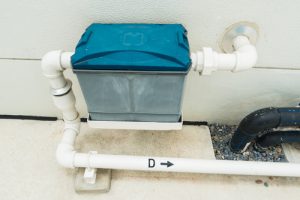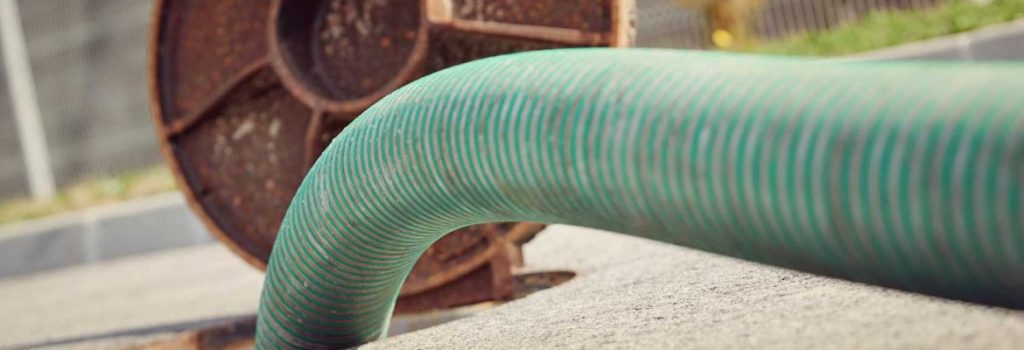Your grease trap is one of the most undervalued tools in your kitchen. Grease traps facilitate proper waste disposal, making them an essential part of a properly functioning kitchen. For this reason, proper grease trap maintenance is an important practice in kitchens to ensure a functional and safe work environment. We’ve compiled a list of tips to help you perform proper maintenance on your kitchen grease trap!

1. Check for Proper Installation
If you plan to use a garbage disposal in your commercial kitchen, it’s imperative that your installation company installs the garbage disposal after the grease trap. If the garbage disposal is installed first, your grease trap can fill with ground food sludge, which will put a risk to the functionality of the grease trap. You should also verify that the grease trap is the proper size for your needs before it’s installed. The amount of food your kitchen cooks, the type of food, your average number of customers, and the number of employees washing dishes will all help determine the proper size grease trap for your kitchen.
2. Look for Grease in Your Trap
When your grease trap is first installed, you should expect and look for grease. After using your trap for one or two days, there should be a buildup of grease in your trap. Little to no grease in your trap can be a sign of improper installation. If you notice grease pooling somewhere other than your trap, there might be a leak. If grease is not gathering properly in your trap, you should call in a professional to reinstall the trap. It’s important to verify proper installation early on to avoid any issues with your trap later on.
3. Install Strainers
You should install strainers in your sinks, dishwashers, and floor drains to prevent large solids from entering grease traps. When solids enter your grease trap, they can create clogs that will prevent it from functioning properly. These issues can lead to serious and even permanent damage. For this reason, you should avoid allowing big pieces of food, rubber gloves, silverware, towels, or any other large items from entering your grease trap. Installing strainers is the best practice to catch these buildups to stop them from entering your grease trap.
4. Avoid Pouring Grease Down the Drain
When you pour grease directly down your drain, it can cause clogs in your pipes and your grease trap and an overworked grease trap. To avoid these problems, you should avoid pouring grease down the drain. Instead, pour grease in a separate container. Your grease trap pumping company will collect this excess grease when they pump out your trap. Make sure to use a metal bucket or a container that is made of a material other than plastic, as plastic will melt when it has hot grease inside it.
5. Dispose of Food Waste
Avoiding pouring grease down your drain is a good start, but you should really try to avoid most things from failing your drain. Although some food scraps will go down your drain and enter your grease trap, you should always scrape off dishes into the trash to minimize the amount of food that goes down the drain. Avoid using the garbage disposal when you can and be sure to frequently empty out the strainers in your drain. Although food will inevitably enter your grease trap, the less food that enters, the better.

6. Pump Your Grease Trap Regularly
In order to determine that your grease trap is properly maintained, it’s beneficial to set up a regular maintenance cycle and call a professional grease trap pumping company. The company will help you determine the proper frequency for your kitchen, but the rule of thumb is that your grease trap should be pumped when it’s ¼ full of FOGS (fats, oils, grease, and solids). When your grease trap is too full of solids, it will not function properly. Therefore, pumping your grease trap regularly is essential to ensure that it performs optimally.
7. Have a Professional Drain Cleaning
Sometimes the plumbing in your kitchen can get clogged with food buildup, grease, and more. When these clogs occur, you should call for professional drain cleaning services. A professional drain cleaner will hydro jet your pipes, blasting them completely clean, completely stripping their walls. A professional drain cleaning will help keep your pipes clear. Clogs can interfere with the functioning of your grease trap, leading to expensive maintenance issues. For this reason, it’s important to have professional drain cleanings to avoid clogs and expensive maintenance issues.
8. Avoid DIY Maintenance
When there are problems with your grease trap, you could be tempted to attempt to fix them yourself to avoid spending money on repairs. Nevertheless, attempting to perform DIY maintenance can lead to unintended damage that will cause even bigger and higher-priced repairs. Professionals have the right equipment for the job and are highly skilled to handle maintenance issues. For this reason, if there are any problems with your grease trap, you should address the professionals to avoid expensive repairs.